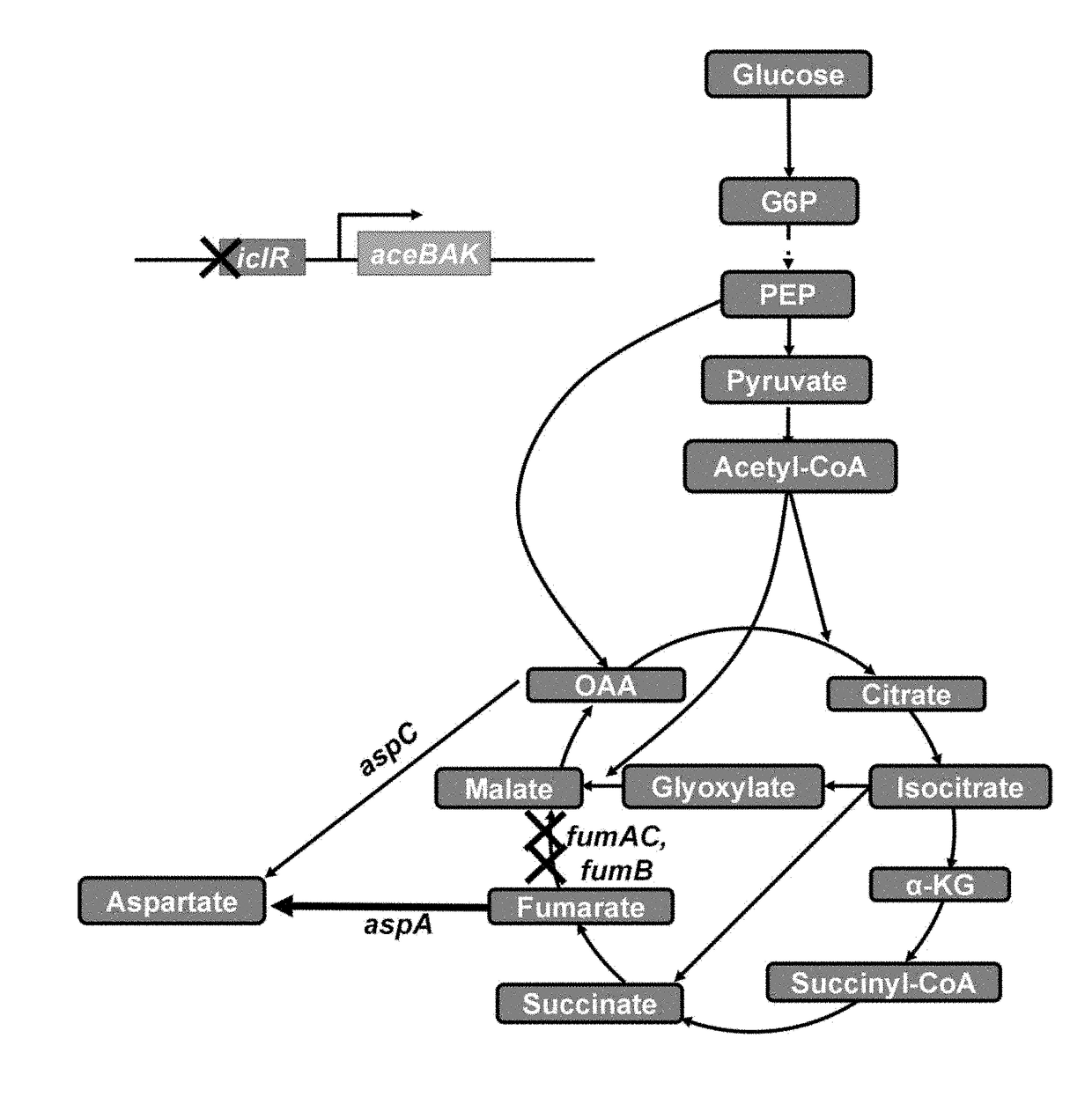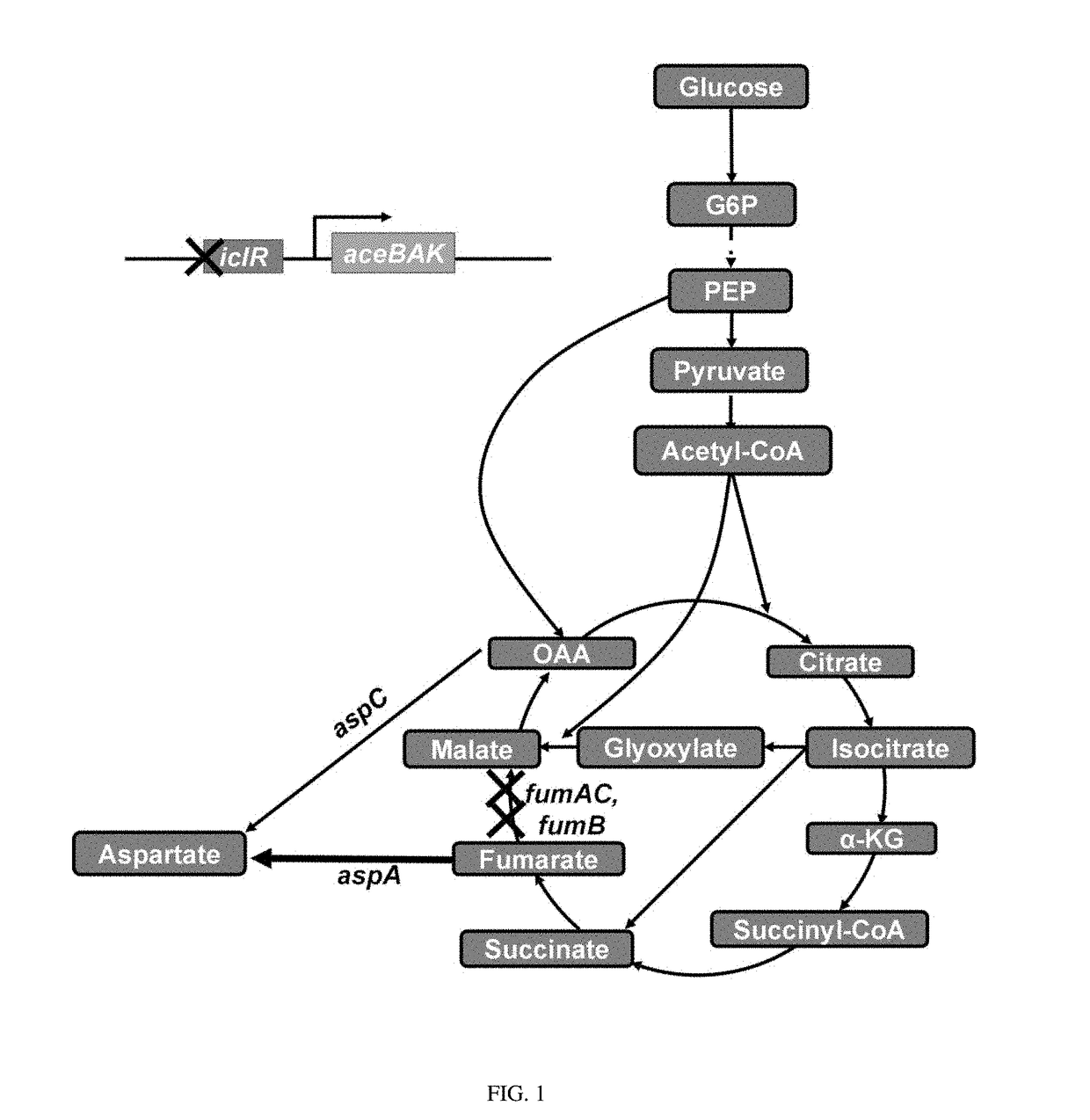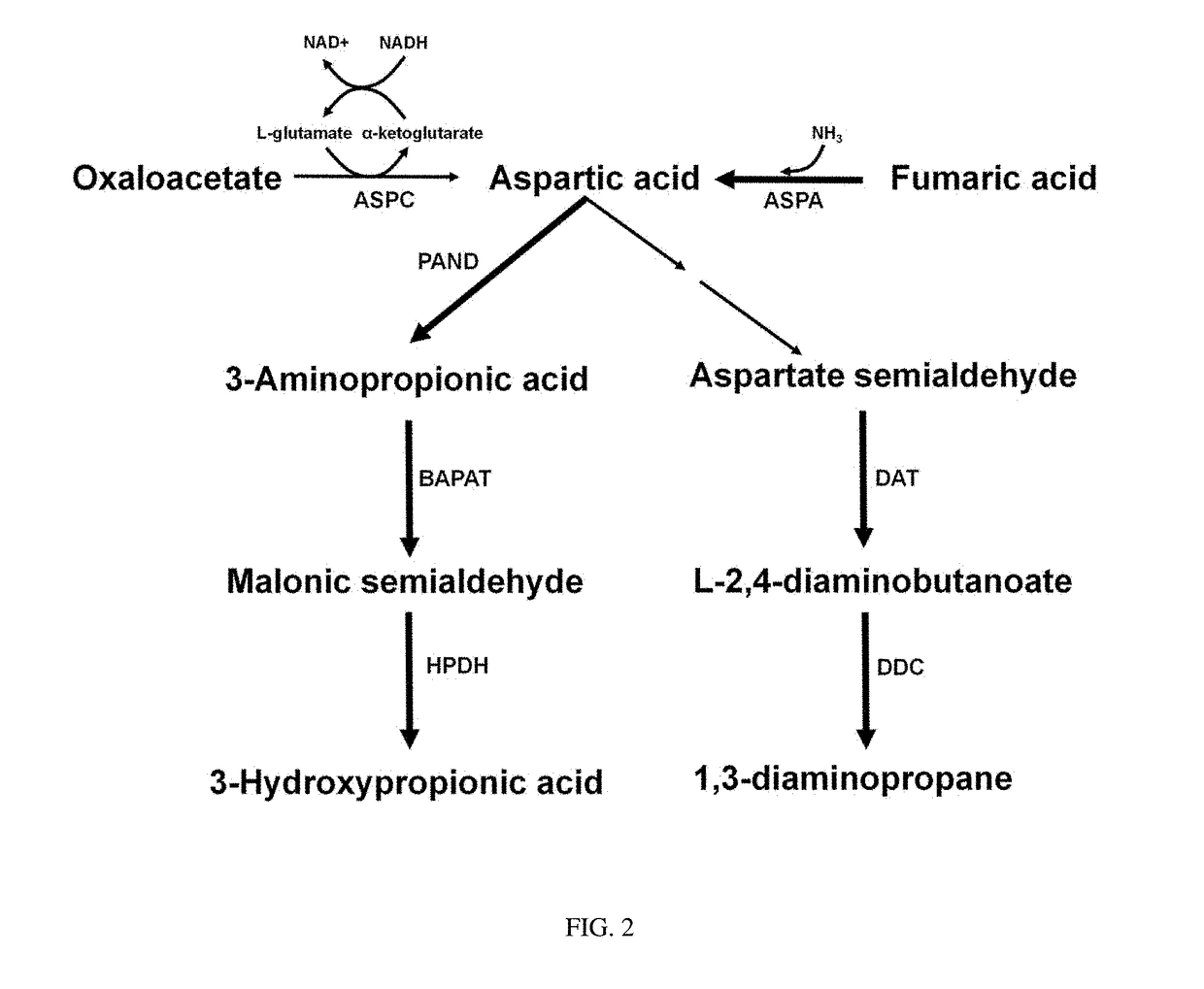Mutant microorganism producing l-aspartic acid derivatives, and method for producing l-aspartic acid derivatives using same
a technology of aspartate and derivatives, which is applied in the direction of lyase, carbon-nitrogen lyase, enzymology, etc., can solve the problems of reducing power, enzymatic reaction efficiency is less, and aspartate aminotransferase requires reducing power
- Summary
- Abstract
- Description
- Claims
- Application Information
AI Technical Summary
Benefits of technology
Problems solved by technology
Method used
Image
Examples
example 1
[0052]1-1: Deletion of iclR Gene (Construction of W3110-I)
[0053]From E. coli W3110 (ATTC 39936), the iclR gene was deleted by a one-step inactivation method (Warner et al., PNAS, 6; 97(12): 6640-6645, 2000) using primers of SEQ ID NOs: 1 and 2, and antibiotic resistance was removed.
[SEQ ID NO: 1]ic1R k / o F:5-AGAAAACCCGCCGTTGCCACCGCACCAGCGACTGGACAGGTTCAGTCTTTGACACTATAGAACGCGGCCG-3[SEQ ID NO: 2]ic1R k / o R:5-TCGCCGCTTTAATCACCATCGCGCCAAACTCGGTCACGCGGTCATCGGTACCGCATAGGCCACTAGTGGA-3
[0054]1-2: Deletion of fumC Gene (Construction of W3110-IC)
[0055]From E. coli W3110-I constructed in Example 1-1, the fumC gene was deleted by a one-step inactivation method using primers of SEQ ID NOs: 3 and 4, and antibiotic resistance was removed.
[SEQ ID NO: 3]fumC k / o F:5-GTTGTCTGAAGAGAAAGCGAGCGCCATTCGTCAGGCGGCGGATGAAGTACGACACTATAGAACGCGGCCG-3[SEQ ID NO: 4]fumC k / o R:5-ATTGGACGGAAGACGTTCAGTTCAAAGTTACCGGAAGCGCCCCCCATGTTCCGCATAGGCCACTAGTGGA-3
[0056]1-3: Deletion of fumA Gene (Construction of W3110-ICA)
[0057]Fr...
example 2
[0066]2-1: Construction of pTac15k panD Vector for Producing 3-Aminopropionic Acid from L-Aspartic Acid
[0067]Using the chromosomal DNA of Corynebacterium glutamicum (ATCC 13032) as a template, PCR was performed with primers of SEQ ID NOs: 15 and 16, thereby constructing a panD gene fragment encoding aspartate-decarboxylase.
[SEQ ID NO: 15]panD F:5′-AGACAGGAATTCATGCTGCGCACCATCCTCG-3′[SEQ ID NO: 16]panD R:5′-AGACAGGAGCTCCTAAATGCTTCTCGACGTCAAAAGC-3′
[0068]Next, the constructed panD fragment was treated with restriction enzymes (EcoRI and SacI), and then ligated by T4 DNA ligase into a pTac15k plasmid that performs strong gene expression with tac promoter, thereby constructing the recombinant plasmid pTac15k panD (FIG. 3).
[0069]2-1: Construction of p100-99A panD Bce4042 Pae0132 Vector for Producing 3-Hydroxypropionic Acid from L-Aspartic Acid
[0070]Using the chromosomal DNA of Corynebacterium glutamicum (ATCC 13032) as a template, PCR was performed with primers of SEQ ID NOs: 17 and 18, th...
example 3
nt of 3-Aminopropionic Acid Production Ability in Mutant Microorganism
[0075]The pTac15k panD plasmid constructed in Example 2-1 was introduced into the strain (constructed in Example 1-7) suitable for producing L-aspartic acid derivatives by the aspartase pathway. As control strains, a strain obtained by introducing pTac15k panD plasmid into the strain of Example 1-6, in which replacement of the promoter of the aspA gene was not performed, and E. coli W3110, were used.
[0076]Mutant microorganisms having the ability to produce 3-aminopropionic acid were selected on LB plate medium containing 30 μg / ml of kanamycin. The transformed strain was inoculated into 10 ml of LB medium and pre-cultured at 37° C. for 12 hours. Next, 3 ml of the preculture was inoculated and cultured in 50 ml of modified MR medium in a 350-ml flask.
[0077]The composition of modified MR medium (pH 6.5) was composed of: per liter of distilled water, 15 g glucose, 9 g (NH4)2SO4, 6.67 g KH2PO4, 4.0 g (NH4)2HPO4, 3.0 g ...
PUM
| Property | Measurement | Unit |
|---|---|---|
| pH | aaaaa | aaaaa |
| pH | aaaaa | aaaaa |
| acid | aaaaa | aaaaa |
Abstract
Description
Claims
Application Information
 Login to View More
Login to View More - R&D
- Intellectual Property
- Life Sciences
- Materials
- Tech Scout
- Unparalleled Data Quality
- Higher Quality Content
- 60% Fewer Hallucinations
Browse by: Latest US Patents, China's latest patents, Technical Efficacy Thesaurus, Application Domain, Technology Topic, Popular Technical Reports.
© 2025 PatSnap. All rights reserved.Legal|Privacy policy|Modern Slavery Act Transparency Statement|Sitemap|About US| Contact US: help@patsnap.com



